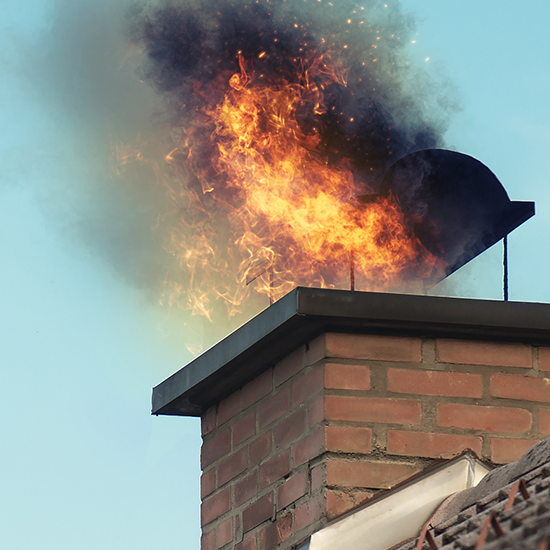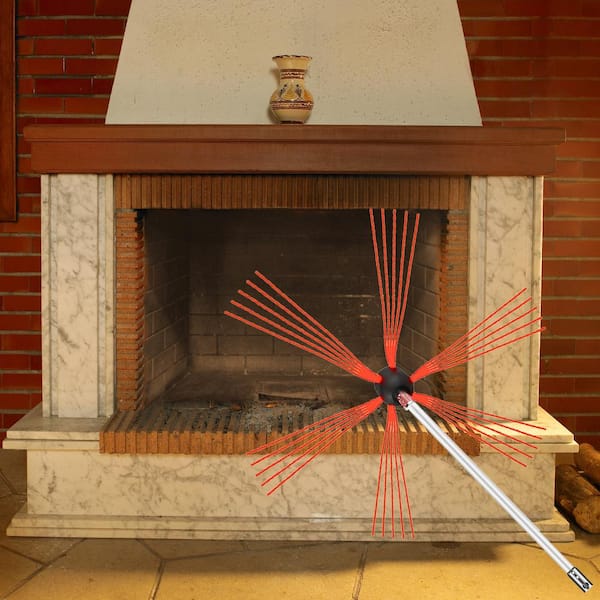Leading Chimney Clean Company Fremont Experts: Maintaining Your Fire Place in Prime Condition
Leading Chimney Clean Company Fremont Experts: Maintaining Your Fire Place in Prime Condition
Blog Article
Why Routine Chimney Cleaning Is Essential for Home Security
Regular chimney cleaning is an usually overlooked yet vital aspect of preserving a protected and safe home environment. While it may not be one of the most extravagant or interesting task on your order of business, overlooking smokeshaft maintenance can have significant repercussions. The buildup of residue and creosote in your smokeshaft can posture a considerable fire hazard, while poor ventilation can result in the possibly harmful risks of carbon monoxide gas poisoning. Regular smokeshaft cleansing can assist prolong the life-span of your smokeshaft, saving you from costly fixings or replacements down the line. But how specifically does chimney cleaning add to home safety and security? Let's check out the factors behind this vital upkeep task and uncover the suggestions for correct smokeshaft care that every home owner must know.
Value of Routine Chimney Cleaning
Regular smokeshaft cleansing is crucial for maintaining a effective and safe home environment. Gradually, creosote, an extremely flammable material, constructs up inside the chimney (Chimney Clean Company Fremont). This residue is a by-product of shedding timber and can accumulate on the internal walls of the smokeshaft. If left unchecked, it can pose a major fire threat. Regular cleansing removes this creosote build-up and minimizes the danger of smokeshaft fires.
In addition to stopping fires, normal smokeshaft cleaning additionally ensures the reliable operation of your heating system. When creosote accumulates, it restricts the air flow via the chimney, leading to poor burning and lowered heating effectiveness.
In addition, a tidy chimney promotes excellent indoor air top quality. As the smokeshaft becomes clogged up with creosote and debris, it can impede the correct ventilation of unsafe gases, such as carbon monoxide. These gases can leak into your home, presenting a considerable health risk to you and your family members. Normal chimney cleansing ensures that the ventilation system is clear and working properly, avoiding the buildup of dangerous gases.
Fire Risk: Build-up of Residue and Creosote
The accumulation of soot and creosote inside the smokeshaft postures a significant fire risk, as it can spark and trigger a potentially damaging chimney fire. Residue is a black, carbonaceous material that is created when timber or fossil gas are burned. It contains fine particles that can quickly become air-borne and clear up inside the chimney. In time, these fragments accumulate and develop a layer of soot. Creosote, on the other hand, is a sticky and extremely combustible substance that is created when wood or nonrenewable fuel sources are shed at reduced temperatures. It is a by-product of incomplete combustion and can stick to the internal wall surfaces of the chimney.
The intense warm generated during a chimney fire can create the chimney to crack or collapse, leading to a potential home fire. In enhancement, the fires and sparks from the chimney fire can leave via the smokeshaft cap and ignite the roofing system or bordering combustible products.

Routine smokeshaft cleaning is vital to remove the buildup of soot and creosote and minimize the risk of a smokeshaft fire. A specialist chimney move will use specific brushes and tools to extensively clean the smokeshaft, getting rid of any built up debris. By keeping the smokeshaft tidy and complimentary from soot and creosote, home owners can guarantee the safe and effective operation of their fireplace or oven, while additionally safeguarding their home from the risks of a smokeshaft fire.
Poor Ventilation and Carbon Monoxide Risks
Insufficient air flow in smokeshafts can present severe threats of carbon monoxide gas poisoning. Carbon monoxide gas (CARBON MONOXIDE) is a colorless, odorless gas that is created when fuels such as oil, wood, or gas are shed. When chimneys are not correctly ventilated, carbon monoxide can accumulate and leak right into the home of a home, leading to potentially dangerous situations.
One of the main root causes of poor smokeshaft air flow is the build-up of particles, such as soot and creosote, which can block the flue and restrict the flow of air. This can result in incomplete combustion and the manufacturing of higher levels of CO. In addition, a chimney that is sporadically cleaned can have a buildup of other blockages, like bird nests or leaves, further hindering the appropriate ventilation of hazardous gases.
The results of carbon monoxide poisoning can be refined and conveniently misinterpreted for other diseases, such as the influenza. Signs and symptoms may include headaches, wooziness, tiredness, confusion, and nausea. Prolonged direct exposure to high levels of find more information carbon monoxide can lead to unconsciousness, body organ damage, and also death.
Regular chimney cleansing and assessment are vital in preserving correct ventilation and reducing the threat of carbon monoxide poisoning. By removing any type of obstructions and making sure that the flue is clear, property owners can take pleasure in a healthy and balanced and secure living atmosphere. It is advised to have actually chimneys inspected and cleaned up at least as soon as a year by a professional smokeshaft sweep to ensure optimal safety and satisfaction.
Expanding the Lifespan of Your Smokeshaft
To guarantee the long life of your smokeshaft, correct maintenance and treatment are important. Regular chimney cleansing is not just essential for home safety but likewise for extending the life-span of your smokeshaft. Over time, residue, debris, and creosote can accumulate inside the chimney, causing numerous concerns that can significantly minimize its lifespan.
One of the major advantages of regular chimney cleansing is the avoidance of chimney fires. Creosote, a black, tar-like substance created by the insufficient combustion of wood, is highly flammable. If not removed, it can accumulate inside the smokeshaft and fire up, causing a potentially devastating and harmful chimney fire. By routinely cleansing the chimney, you can remove this build-up and decrease the threat of a fire.
Furthermore, routine chimney cleaning likewise helps to avoid clogs. When particles, such as fallen leaves, branches, or also small animals' nests, obstruct the smokeshaft, it can hinder proper air flow and airflow.
Along with protecting against obstructions and fires, normal chimney cleansing can also recognize and deal with any kind of possible damages or wear and tear. By evaluating the smokeshaft throughout the cleaning procedure, you can catch any type of early indicators of cracks, leaks, or architectural problems. Trigger repair work can be made to avoid additional damages and expand the life expectancy of your chimney.
Tips for Proper Smokeshaft Maintenance
For efficient smokeshaft maintenance, it is essential to comply with a couple of key tips to make certain the durability and safety of your chimney. These pointers will certainly not only help you maintain the effectiveness of your chimney however also lower the threat of smokeshaft fires and other possible dangers.
First of all, it is important to have your chimney inspected and cleansed by a specialist chimney sweeper at the very least once a year. A professional will certainly be able to identify any possible problems such her explanation as creosote buildup, animal nests, or architectural damages that can pose a danger to your chimney's efficiency and safety.
Along with yearly examinations, it is very important to consistently check and clean your smokeshaft's flue and cap. The flue must be clear of any kind of debris or blockages that might restrict air flow or create smoke to support into your home. The chimney cap should be in great problem, firmly attached, and without any type of fractures or damages to avoid undesirable visitors such as birds or squirrels from entering your smokeshaft.
In addition, it is necessary to use skilled and dry timber for shedding in your fireplace. Wet or environment-friendly wood creates even more smoke and creosote, leading to a higher threat of chimney fires. Additionally, prevent burning products such as garbage, cardboard, or dealt with wood, as they can launch dangerous chemicals and harm your smokeshaft.
Finally, guarantee that your chimney is geared up with a sturdy stimulate arrestor to prevent stimulates and embers from running away and potentially triggering a fire. Chimney Clean Company Fremont.
Adhering to these tips for proper smokeshaft upkeep will certainly help make certain the safety and security and durability of your chimney and give tranquility of mind for you and your family.

Verdict
In final thought, regular chimney cleansing is vital for maintaining home safety. By on a regular basis cleaning and keeping your chimney, you can prolong its lifespan and make certain the safety of your home and household.

One of the major advantages of routine chimney cleansing is the prevention of smokeshaft fires - Chimney Clean Company Fremont. The smokeshaft cap must be in great problem, securely attached, and cost-free of any splits or damage to prevent unwanted guests such as birds or squirrels from entering your chimney
Report this page